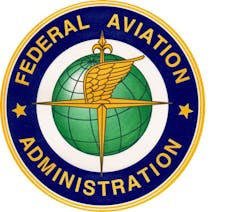FAA Issues Part 107 Waivers, Airspace Authorizations
October 25- The Federal Aviation Administration (FAA) began issuing Part 107 waivers and airspace authorizations to drone operators starting August 29, 2016, the effective date of the new rule. As of October 24, 2016, the agency has approved 81 authorizations for flights in Class D and E airspace, and has issued 36 waivers of Part 107 provisions to drone operators who applied after the rule’s effective date.
However, the agency has found that many applications have incorrect or incomplete information. Many applicants request too many waivers or request waivers for flights in types of airspace for which the FAA is not yet granting approvals. As a result, the agency has had to reject 71 waiver requests and 854 airspace applications.
It’s important for applicants to understand the information needed to make a successful safety case for granting a waiver. The performance-based standards are available at: https://www.faa.gov/uas/request_waiver/media/performance_based_standards.pdf
For example, we clearly spell out the information required for a waiver to fly at night – one of the most common requests:
- Applicant must provide a method for the remote pilot to maintain visual line of sight during darkness.
- Applicant must provide a method for the remote pilot to see and avoid other aircraft, people on the ground, and ground-based structures and obstacles during darkness.
- Applicant must provide a method by which the remote pilot will be able to continuously know and determine the position, altitude, attitude, and movement of their small unmanned aircraft (sUA).
- Applicant must assure all required persons participating in the sUA operation have knowledge to recognize and overcome visual illusions caused by darkness, and understand physiological conditions which may degrade night vision.
- Applicant must provide a method to increase conspicuity of the sUA to be seen at a distance of 3 statute miles unless a system is in place that can avoid all non-participating aircraft.
The other performance-based standards also list exactly what the FAA needs to consider a waiver. Operators must make waiver requests at: https://www.faa.gov/uas/request_waiver/
Without a detailed description of how the applicant intends to meet these standards, the FAA can’t determine if a waiver is possible. Operators should select only the Part 107 regulations that need to be waived for the proposed operation. Applicants also should respond promptly to any request we make for additional information. If the agency does not receive a response after 30 days, it will withdraw the request.
Operators must apply for airspace authorizations on the same web page. The required information is spelled out in the waiver/airspace authorization instructions document:https://www.faa.gov/uas/request_waiver/media/instructions.pdf
As the FAA previously announced, operators who want to fly in Class G (uncontrolled) airspace don’t need FAA authorization. The agency is currently processing requests to operate in Class D and Class E airport surfaces. We will begin to consider requests for Class C drone flights after October 31 and for Class A airspace after December 5. Applications to fly in those areas before the indicated dates won’t be approved.
The Part 107 regulations provide a flexible framework for unmanned aircraft operations. Waivers and airspace authorizations are an important part of making the new rule work as intended. Applicants can help speed the process by making sure they make a solid, detailed safety case for any flights not covered under the small drone rule.
